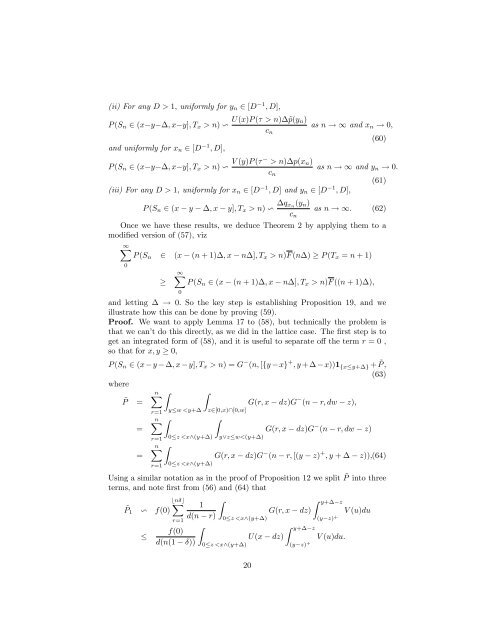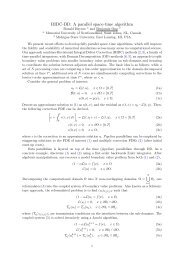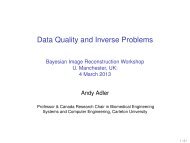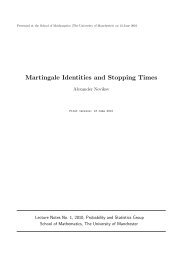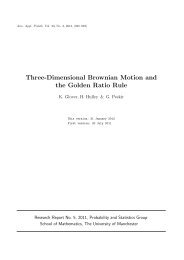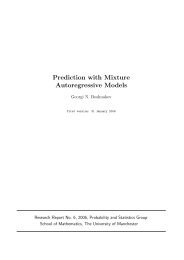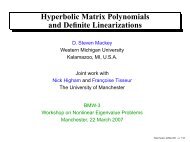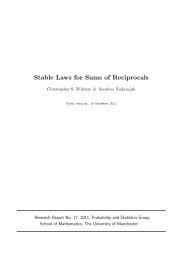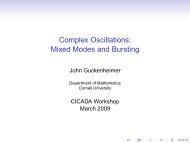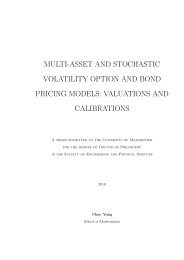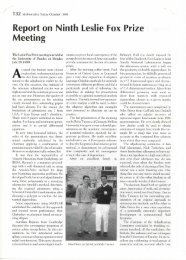Local Behaviour of First Passage Probabilities - MIMS - The ...
Local Behaviour of First Passage Probabilities - MIMS - The ...
Local Behaviour of First Passage Probabilities - MIMS - The ...
Create successful ePaper yourself
Turn your PDF publications into a flip-book with our unique Google optimized e-Paper software.
(ii) For any D > 1; uniformly for y n 2 [D 1 ; D];P (S n 2 (x y ; x y]; T x > n) v U(x)P ( > n)~p(y n)c nas n ! 1 and x n ! 0;and uniformly for x n 2 [D 1 ; D];P (S n 2 (x y ; x y]; T x > n) v V (y)P ( > n)p(x n)c nas n ! 1 and y n ! 0:(iii) For any D > 1; uniformly for x n 2 [D 1 ; D] and y n 2 [D 1 ; D];(60)(61)P (S n 2 (x y ; x y]; T x > n) v q x n(y n )as n ! 1: (62)c nOnce we have these results, we deduce <strong>The</strong>orem 2 by applying them to amodi…ed version <strong>of</strong> (57), viz1XP (S n 2 (x (n + 1); x n]; T x > n)F (n) P (T x = n + 1)01XP (S n 2 (x (n + 1); x n]; T x > n)F ((n + 1));0and letting ! 0: So the key step is establishing Proposition 19, and weillustrate how this can be done by proving (59).Pro<strong>of</strong>. We want to apply Lemma 17 to (58), but technically the problem isthat we can’t do this directly, as we did in the lattice case. <strong>The</strong> …rst step is toget an integrated form <strong>of</strong> (58), and it is useful to separate o¤ the term r = 0 ;so that for x; y 0;P (S n 2 (x y ; x y]; T x > n) = G (n; [fy xg + ; y + x))1 fxy+g + P ~ ;(63)wherenXZ Z~P =G(r; x dz)G (n r; dw z);==r=1nXZr=1nXZr=1yw


